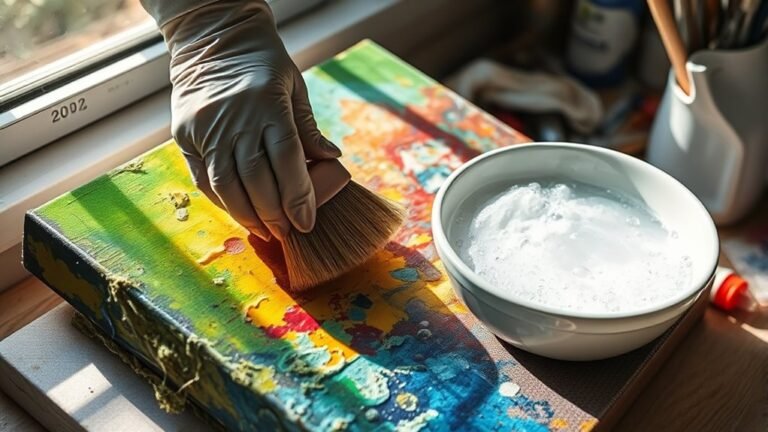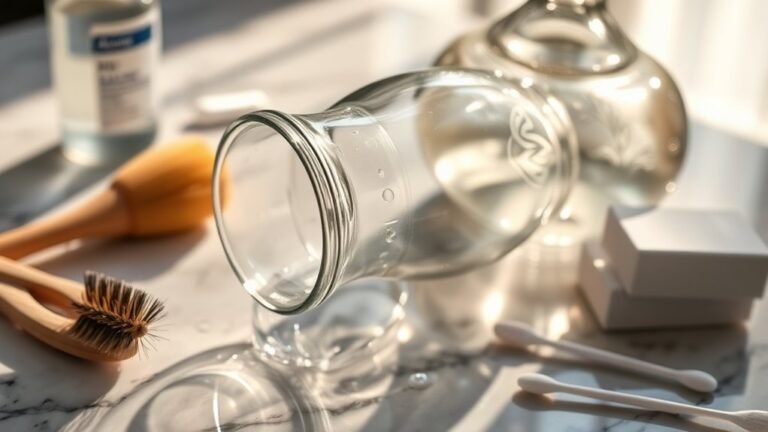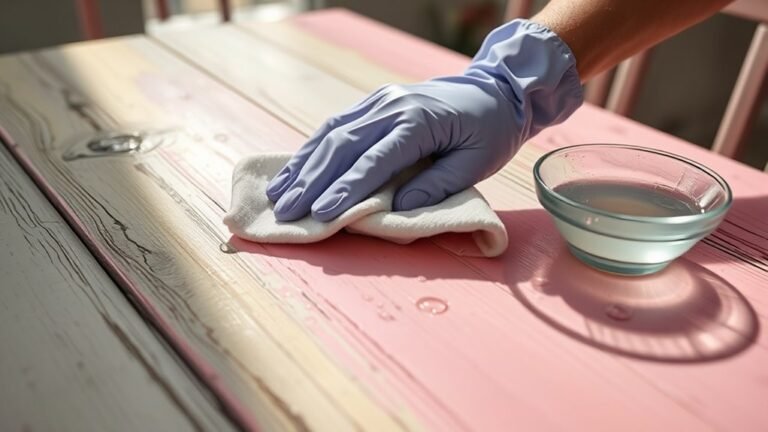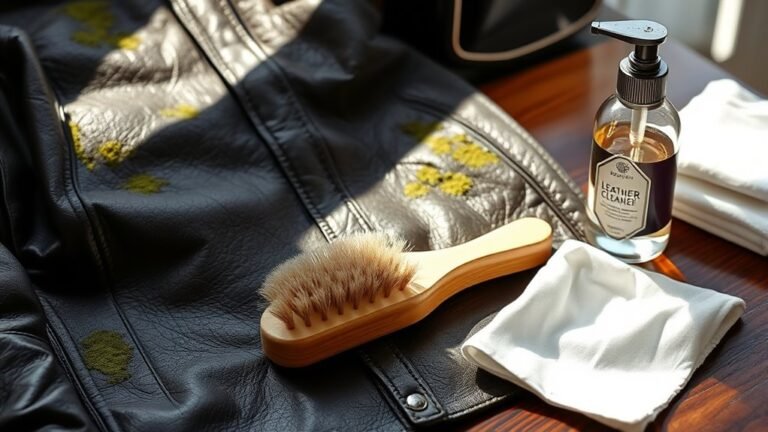How to Clean Silicone Resin Molds
To clean silicone resin molds, start by scraping off any resin using a plastic spatula. Then, wash the molds in warm soapy water with a soft sponge. Rinse them thoroughly under warm water to remove soap residue, and let them air dry completely on a clean towel. Always wear gloves and work in a ventilated area for safety. Want to keep your molds in top shape for longer? There’s more to discover about maintenance and care!
##
If you’re looking to maintain your silicone resin molds and ensure they last for many crafting projects to come, you’ve come to the right place. This article will guide you through the essential steps for effectively cleaning and caring for your molds, ensuring that you achieve the best possible results with every use. From the right cleaning supplies to techniques for preventing resin build-up, you’ll find all the information you need to keep your molds in top condition. Get ready to enhance your crafting experience and enjoy the benefits of well-maintained silicone molds!
Preparation For Cleaning
Before diving into the cleaning process, it’s crucial to gather all the necessary supplies to make the task efficient and straightforward. Start by evaluating your mold maintenance routine; knowing how often you clean your molds can influence your choice of cleaning supplies. If you clean them frequently, you might need less intensive products. Gather soft cloths, a gentle soap or vinegar solution, and a soft brush for stubborn residue. Verify you have a clean workspace to prevent contamination. Think about the type of molds you use—some may require special attention. By preparing ahead, you’ll streamline the process and protect your molds for future projects. Remember, a little preparation goes a long way in maintaining the longevity of your silicone molds. Using gentle, non-abrasive cleaners designed for delicate surfaces helps preserve the finish and functionality of silicone molds.
Tools and Chemical Required
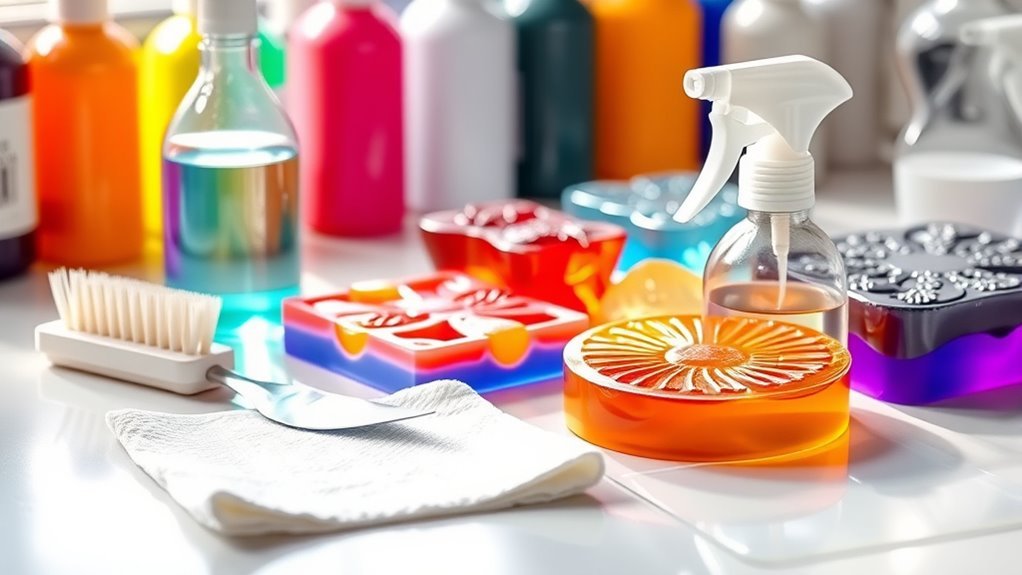
To effectively clean your silicone resin molds, you’ll need a few essential tools and chemicals that will make the process easier and more efficient. Here’s a handy list to get you started on your mold maintenance journey:
| Tool/Chemical | Purpose |
|---|---|
| Mild dish soap | General cleaning solution |
| Isopropyl alcohol | Disinfectant for stubborn residue |
| Soft-bristle brush | Gentle scrubbing without damage |
| Silicone mold release | Prevents future sticking issues |
| Lint-free cloth | For drying and polishing |
With these cleaning solutions on hand, you’ll guarantee your molds stay in pristine condition, allowing you to free your creativity without worrying about residue or imperfections.
How to Clean:
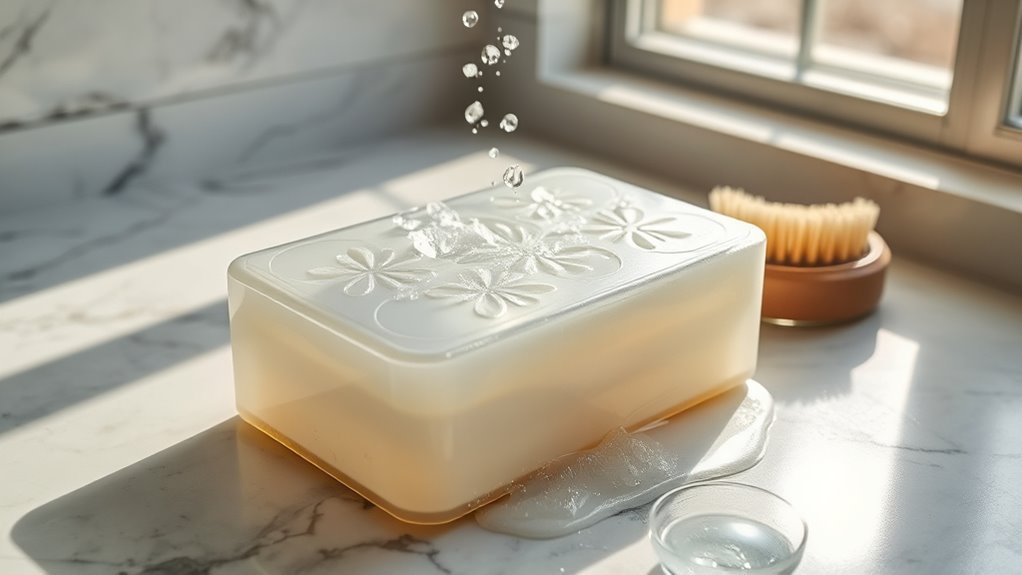
How to Clean Silicone Resin Molds
Cleaning your silicone resin molds is essential for ensuring that your creations come out perfectly every time. Follow these detailed steps to maintain your molds in top shape:
Step 1: Remove Residue
- Gather Tools: Use a soft tool, such as a plastic spatula or a silicone scraper, to prevent scratching the mold.
- Gently Scrape: Carefully remove any leftover resin from the mold’s surface. Be sure to avoid using sharp or abrasive tools that could damage the silicone.
Step 2: Wash
- Prepare Soapy Water: Fill a bowl or sink with warm water and add a few drops of mild dish soap.
- Use a Sponge: Take a soft sponge and dip it into the soapy water.
- Clean Thoroughly: Wipe down the molds, ensuring that you cover all areas, including any intricate details. Pay extra attention to corners and crevices where resin might be trapped.
Step 3: Rinse
- Rinse with Clean Water: Hold the mold under a stream of clean, warm water to remove all soap residue.
- Check for Soap: Inspect the mold visually to ensure that no soap remains; any leftover soap can affect the next casting.
Step 4: Dry
- Air Dry Completely: Place the molds on a clean, dry towel or a drying rack. Allow them to air dry completely to prevent moisture buildup.
- Store Properly: Once dry, store the molds in a cool, dry place away from direct sunlight to maintain their shape and flexibility.
Safety Consideration
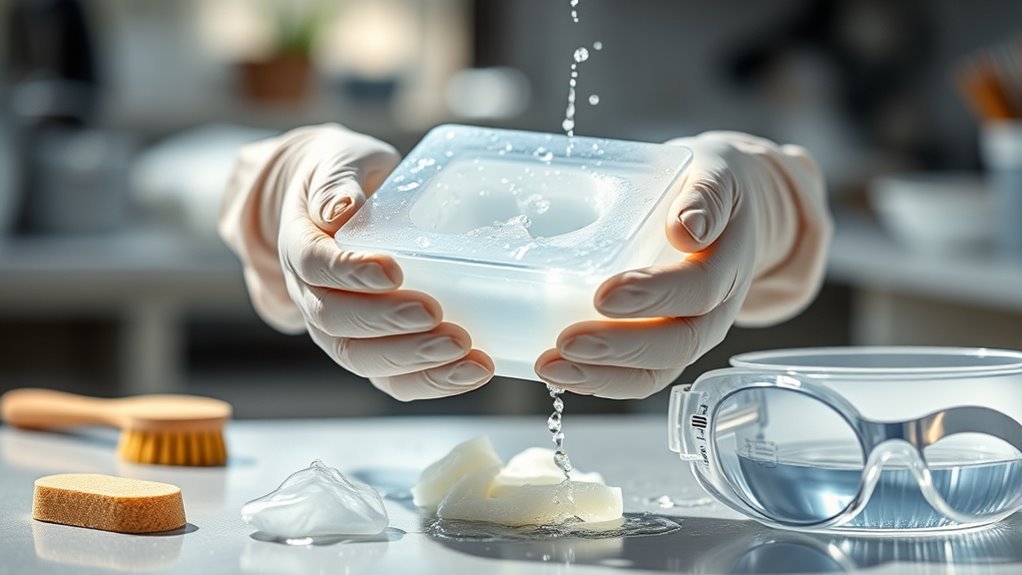
While cleaning your silicone resin molds is essential for maintaining their quality, it’s equally important to prioritize safety during the process. Start by wearing safety gloves to protect your hands from any harsh chemicals or residues. Even non-toxic cleaners can cause irritation, so don’t skip this step! Next, make certain you’re working in a well-ventilated area. Good airflow helps disperse any fumes and keeps the air fresh, which is especially important if you’re using solvents or strong cleaners. If possible, open windows or use a fan to enhance ventilation. Remember, your safety is key to enjoying your crafting experience. By taking these precautions, you can clean your molds effectively without compromising your health or well-being. Happy crafting! Additionally, consider choosing eco-friendly cleaning products to minimize exposure to harsh chemicals and protect your health.
Tips to keep clean for long time
Once you’ve guaranteed a safe cleaning process, maintaining the cleanliness of your silicone resin molds becomes a key factor in their longevity and performance. Here are some essential mold maintenance tips to keep them in top shape:
- Clean Immediately: Rinse your molds right after use to prevent residue buildup.
- Use Mild Soap: A gentle soap and warm water will effectively remove any remaining resin without damaging the silicone.
- Store Properly: Keep molds flat and in a cool, dry place to avoid warping or dust accumulation.
- Inspect Regularly: Check for signs of wear and tear; addressing issues early can prolong their life. Additionally, using plant-based cleaning products can reduce exposure to harmful chemicals and protect both your health and the environment.
Frequently Asked Questions
Can I Use a Dishwasher to Clean Silicone Resin Molds?
You might think of your dishwasher as a knight in shining armor, ready to rescue your silicone resin molds from the clutches of grime. However, it’s best to avoid using it. High heat and harsh dishwasher settings can warp or damage the molds. Instead, embrace the gentle touch of hand washing with mild soap and warm water for effective mold cleaning. This way, your molds will stay as resilient as your creative spirit.
How Often Should I Clean My Silicone Resin Molds?
You should clean your silicone resin molds after every use to guarantee they stay in great shape. Regular cleaning helps maintain mold integrity and prevents any buildup that can affect your next project. A quick wash with mild soap and water will do the trick. By establishing this cleaning frequency, you’ll enjoy hassle-free crafting, prolonging your molds’ lifespan and giving you the freedom to create without worry. Keep those molds happy!
Do Silicone Molds Get Stained Easily?
Silicone molds are like canvases, waiting to create beautiful art, but they can get stained if not cared for. For effective silicone mold maintenance, avoid using dark or highly pigmented materials, as they tend to leave marks. To prevent staining, always clean your molds after use and store them away from sunlight. With a little attention and care, you can keep your molds looking fresh and ready for your next creative adventure!
Can I Use Abrasive Cleaners on Silicone Molds?
You shouldn’t use abrasive cleaners on silicone molds. They can scratch and damage the surface, compromising mold maintenance. Instead, opt for gentle, non-abrasive cleaners or warm soapy water. This way, you’ll preserve the integrity of the mold and guarantee it lasts longer. Keep your materials in great shape, and you won’t have to worry about unwanted scratches or stains that can affect your crafting adventures! Enjoy your creative freedom without the hassle!
What Should I Do if My Mold Has a Persistent Odor?
If your mold has a persistent odor, try some odor removal techniques. First, wash it with warm, soapy water and let it dry completely. Next, you can soak it in a mixture of water and white vinegar for about 30 minutes. For a fresh scent, add a few drops of essential oils like lavender or tea tree to the water. Rinse well afterward, and your mold should smell much better!
